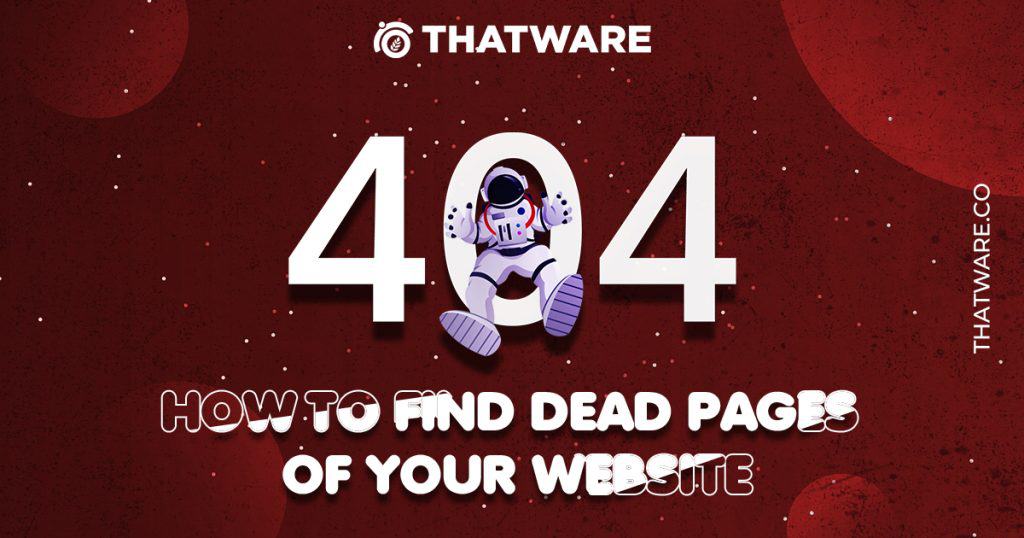SUPERCHARGE YOUR ONLINE VISIBILITY! CONTACT US AND LET’S ACHIEVE EXCELLENCE TOGETHER!
What are Dead pages?
Those are the pages which can’t generate any traffic for the website.
- According to Google Webmaster, those pages have fewer clicks and impressions.
- According to Google Analytics, those pages have fewer views and active sessions.

How to Get the Dead pages from Analytics:
Go to Google analytics 🡪 Behavior 🡪 Site Content 🡪 All pages
Set the data time range 6 months for better results:
Add filter on page views and set the data from lowest to highest:
Select the full data according to the result count:
Export the full data from analytics:
Remove unwanted pages from this list:
List down the pages with 1 to 10 pageviews:
How to Get the Dead pages from Google Search Console:
Go to Google search console 🡪Seach Results
Select the data range: last 6 months
Export all the data and set the clicks range: 0 to 10
And the impressions range: 0 to 1000
How to optimize those Dead pages:
- Use those pages as hyperlinks from high-traffic pages.
- Need to add more click elements and relevant content on those pages.
- Need to work on advanced off-page for those pages.
Advanced Techniques for Finding Dead Pages
Advanced techniques are crucial in the always changing field of web optimisation since they can help identify dead sites that may be invisible to traditional methods. These methods make use of advanced technologies and analytical insights to reveal hidden problems and give a thorough assessment of the health of a website. Here’s a closer look at a few sophisticated methods for identifying dead pages:
Content Audits with Detailed Metrics:
In-depth content audits explore specific indicators like backlink profile, social shares, and user engagement, going beyond broad research. Screaming Frog’s SEO Spider and SEMrush’s Content Audit feature are examples of sophisticated content auditing tools that help website owners find dead pages by analysing a variety of performance metrics. Through the examination of data like organic traffic, conversion rates, and dwell time, these tools offer practical insights into which pages require optimisation due to their poor performance.
Dynamic Crawling and Indexing:
Traditional website crawlers offer valuable insights into a site’s structure and content, but advanced crawling and indexing techniques take this a step further. Dynamic crawling tools like DeepCrawl and Moz’s Site Crawl utilize advanced algorithms to simulate user behavior and discover hidden pages that may not be easily accessible through traditional crawling methods. By mimicking search engine bots and following JavaScript-rendered content, these tools uncover dead pages that may be overlooked by conventional crawlers, providing a more comprehensive view of a website’s content inventory.
Predictive Analytics and Machine Learning:
Leveraging the power of predictive analytics and machine learning algorithms can proactively identify potential dead pages before they become significant issues. Advanced analytics platforms like Google Analytics 360 and Adobe Analytics offer predictive modeling capabilities that forecast future trends and identify pages at risk of declining performance. By analyzing historical data and user behavior patterns, these platforms can flag pages with diminishing engagement metrics or declining search visibility, enabling website owners to take preemptive action to optimize or redirect these pages before they become dead weight.
Natural Language Processing (NLP) and Sentiment Analysis:
Understanding user intent and sentiment is crucial for identifying dead pages that fail to resonate with target audiences. Advanced NLP and sentiment analysis tools like MonkeyLearn and Lexalytics analyze text data from user reviews, comments, and social media mentions to gauge sentiment and identify pages with negative feedback or dissatisfaction. By detecting patterns in user sentiment and identifying common pain points or issues, these tools provide valuable insights into areas for improvement and optimization.
Cross-Channel Attribution and Integration:
Dead pages may not always manifest as standalone issues but can be symptomatic of broader issues across multiple channels and touchpoints. Advanced attribution modeling and cross-channel integration techniques enable website owners to connect the dots between different marketing channels and identify dead pages that may be underperforming in specific contexts. By integrating data from sources such as Google Analytics, Google Ads, and social media platforms, marketers can identify correlations between channel performance and page engagement, enabling more targeted optimization efforts.
Deep Link Analysis and Semantic SEO:
Traditional SEO practices focus on optimizing individual pages for specific keywords, but advanced deep link analysis and semantic SEO techniques take a more holistic approach to content optimization. Tools like LinkMiner and CognitiveSEO analyze the semantic relevance of internal links and anchor text, uncovering opportunities to optimize dead pages through contextual linking and semantic clustering. By identifying thematic clusters of related content and optimizing internal linking structures accordingly, website owners can improve the discoverability and relevance of dead pages, boosting their chances of attracting organic traffic and engagement.
Strategies for Optimizing Dead Pages
Once dead pages are identified, it’s essential to implement strategies to revive them and maximize their potential. Here are some effective strategies for optimizing dead pages:
1. Content Refresh
Updating outdated content with fresh information, statistics, and insights is crucial for making dead pages more relevant and valuable to users. Conducting thorough research to identify new trends, developments, or data points can breathe new life into stagnant content. Additionally, incorporating relevant keywords and optimizing meta tags can improve search visibility and attract organic traffic. By regularly auditing and updating content, website owners can ensure that dead pages remain engaging and informative for users.
2. Internal Linking
Utilizing internal links from high-traffic pages to direct users to dead pages can significantly improve their visibility and drive traffic. Strategic internal linking not only helps users discover relevant content but also enhances website navigation and user experience. By embedding contextual links within relevant content and anchor text, website owners can guide users to dead pages seamlessly. Implementing a hierarchical linking structure and ensuring that dead pages are accessible from multiple entry points can further enhance their visibility and engagement.
3. Enhanced User Experience
Improving the user experience of dead pages is essential for retaining visitor interest and encouraging interaction. Adding interactive elements such as quizzes, polls, or calculators can make dead pages more engaging and interactive. Incorporating multimedia content such as videos, infographics, or slideshows can enhance visual appeal and convey information more effectively. Clear calls-to-action (CTAs) prompting users to take desired actions, such as signing up for a newsletter or downloading a resource, can also increase engagement and conversion rates. Optimizing page load times and ensuring mobile responsiveness are critical for enhancing usability and ensuring a seamless browsing experience across devices.
4. Promotional Strategies
Promoting dead pages through various marketing channels is essential for attracting traffic and engagement. Leveraging social media platforms to share updates, insights, or teasers related to dead pages can generate interest and drive traffic to the website. Sending targeted email newsletters featuring dead page content or offering exclusive promotions can entice users to revisit the site and explore relevant content. Collaborating with influencers or industry partners to share dead page content with their audiences can amplify reach and visibility. Additionally, participating in relevant online communities or forums and sharing insights or resources from dead pages can attract new visitors and stimulate discussion.
5. Conversion Optimization
Identifying conversion opportunities on dead pages and implementing strategies to encourage user actions is crucial for maximizing their impact. Conducting A/B testing to refine conversion elements such as CTAs, forms, or messaging can help optimize dead pages for desired outcomes. Offering incentives or rewards for completing desired actions, such as discounts or freebies, can motivate users to engage with dead page content. Providing informative and persuasive content that addresses user needs or pain points can increase trust and credibility, leading to higher conversion rates. Tracking and analyzing user behavior and engagement metrics can provide valuable insights into the effectiveness of conversion optimization efforts and inform future strategies.
6. Backlink Building
Acquiring high-quality backlinks from authoritative websites is essential for improving the search engine ranking and visibility of dead pages. Conducting outreach to relevant websites and directories to secure backlinks through guest posting, content partnerships, or resource page inclusion can significantly impact dead page performance. Creating compelling and valuable content that addresses common industry challenges or provides unique insights can attract backlinks naturally. Monitoring backlink profiles and disavowing toxic or irrelevant links can protect dead pages from potential harm and maintain their credibility with search engines. Continuously seeking opportunities to build and diversify backlinks can help dead pages gain traction in search engine results and attract organic traffic over time.
Optimizing dead pages is a multifaceted process that requires strategic planning, creativity, and continuous effort. By refreshing content, enhancing user experience, and implementing promotional and conversion optimization strategies, website owners can breathe new life into stagnant pages and maximize their potential for attracting traffic and engagement. Backlink building and internal linking further amplify the visibility and credibility of dead pages, ensuring long-term success in search engine rankings. Embracing these strategies and adapting to evolving user preferences and industry trends are key to revitalizing dead pages and maintaining a thriving online presence.

Thatware | Founder & CEO
Tuhin is recognized across the globe for his vision to revolutionize digital transformation industry with the help of cutting-edge technology. He won bronze for India at the Stevie Awards USA as well as winning the India Business Awards, India Technology Award, Top 100 influential tech leaders from Analytics Insights, Clutch Global Front runner in digital marketing, founder of the fastest growing company in Asia by The CEO Magazine and is a TEDx speaker and BrightonSEO speaker.


